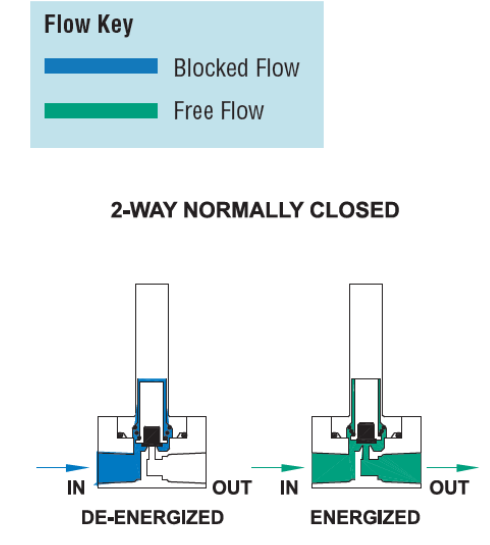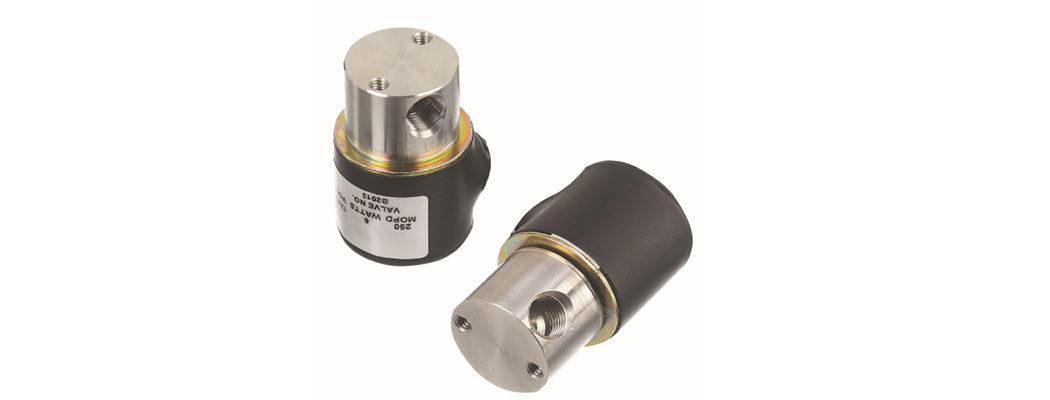When selecting and installing a solenoid valve, it is important to understand the difference between over-seat and under-seat. First, the seat of the valve is the position where the plunger seal material will meet the valve body and make a liquid and airtight seal.
One of the more common valve configurations is the two-way normally closed (2-Way NC). In this configuration the inlet is over-seat, and the outlet is under-seat. In the image below, in the de-energized state the valve is closed, and the blue is indicating the fluid (liquid or gas). As it travels into the valve it enters the body and goes into the guide tube where it is over the plunger seal, hence over-seat.

Still looking at the de-energized state, you notice the outlet is white since no fluid can travel through with the valve closed. It cannot because the plunger is down on the seat, on top of the outlet passageway, which in turn means the outlet is under the seat, or under-seat.
It’s important to understand the difference because it helps explain how the valve is working by trying to overcome and balance different forces. On a 2-Way NC valve the spring is holding the plunger down, but as the inlet pressure comes in, it is also pushing the plunger down and helping it seal better. The coil creates the magnetic field and thus pulls the plunger upwards, overcoming the spring force and inlet pressure force. On the outlet, or under-seat, if there is any backpressure present (pressure going opposite of the inlet direction) it may overcome the spring and inlet pressure force and push the plunger up, which can lead to a problem in your system.
Make sure you review the information on MOPD (Max Operating Pressure Differential) as well prior to selecting your valve so the correct valve is chosen for your application.
Click HERE to view the full range of Gems Solenoid valves
 SEARCH OUR RESOURCE CENTER
SEARCH OUR RESOURCE CENTER

